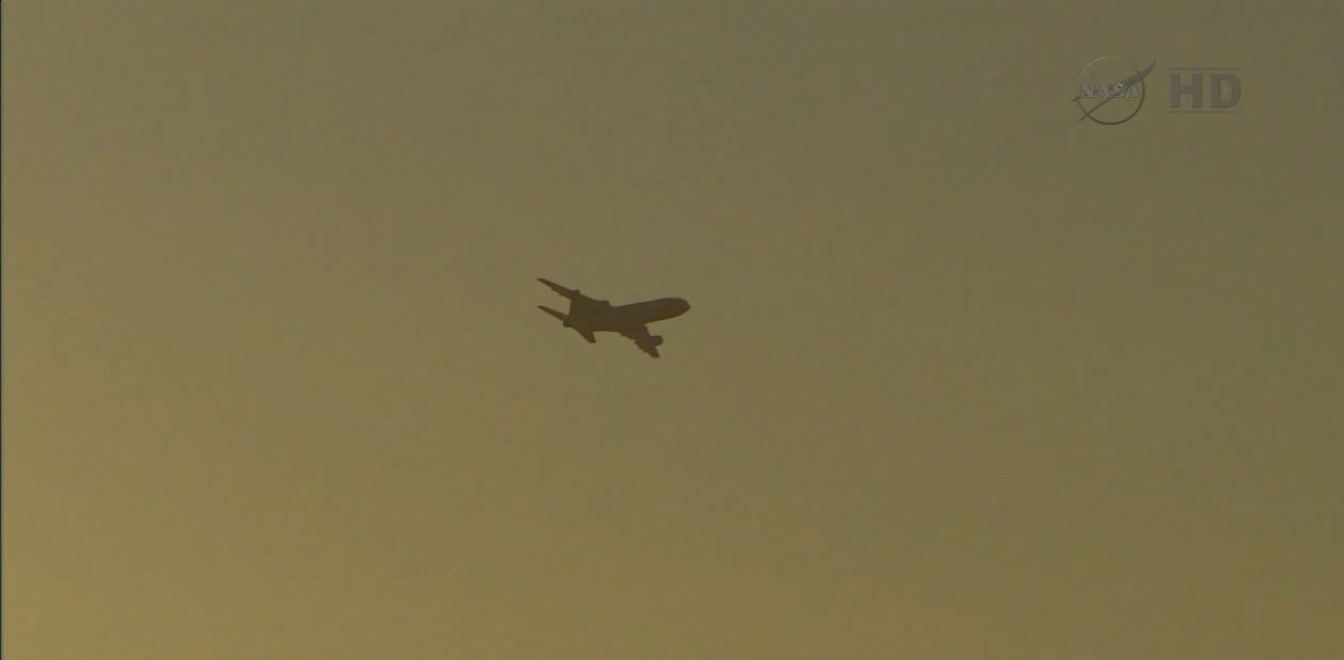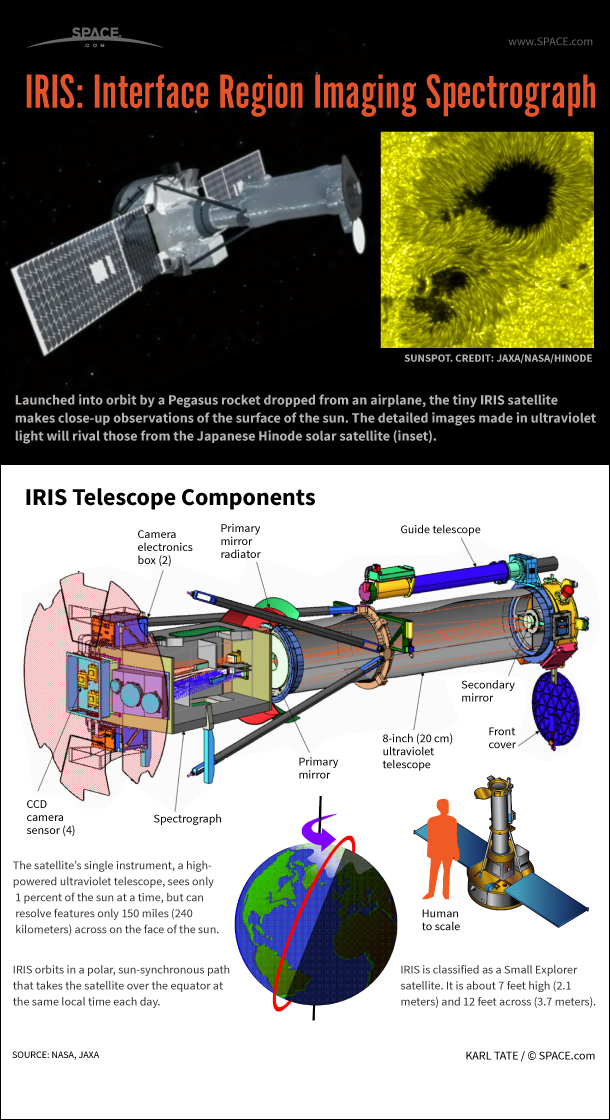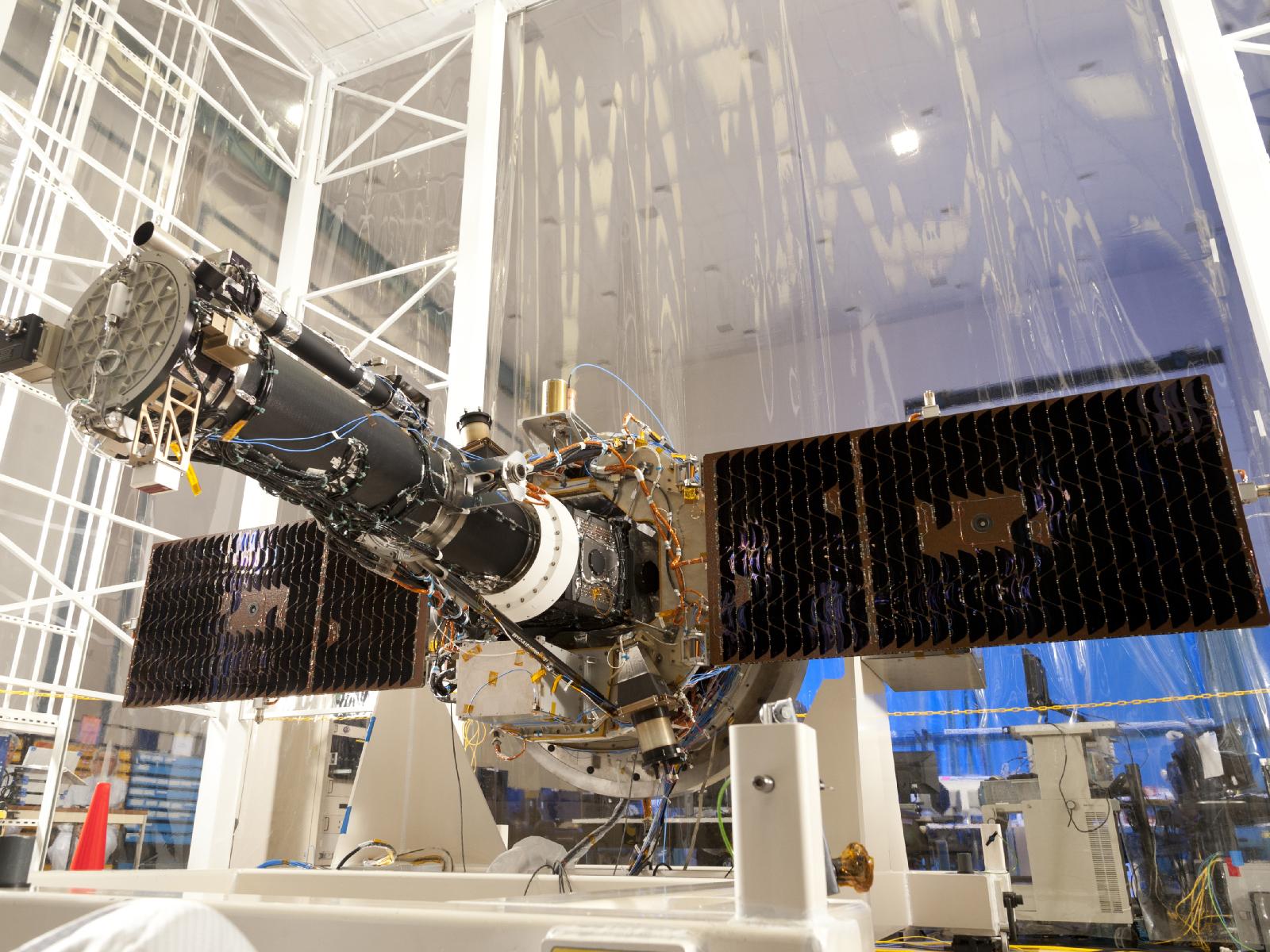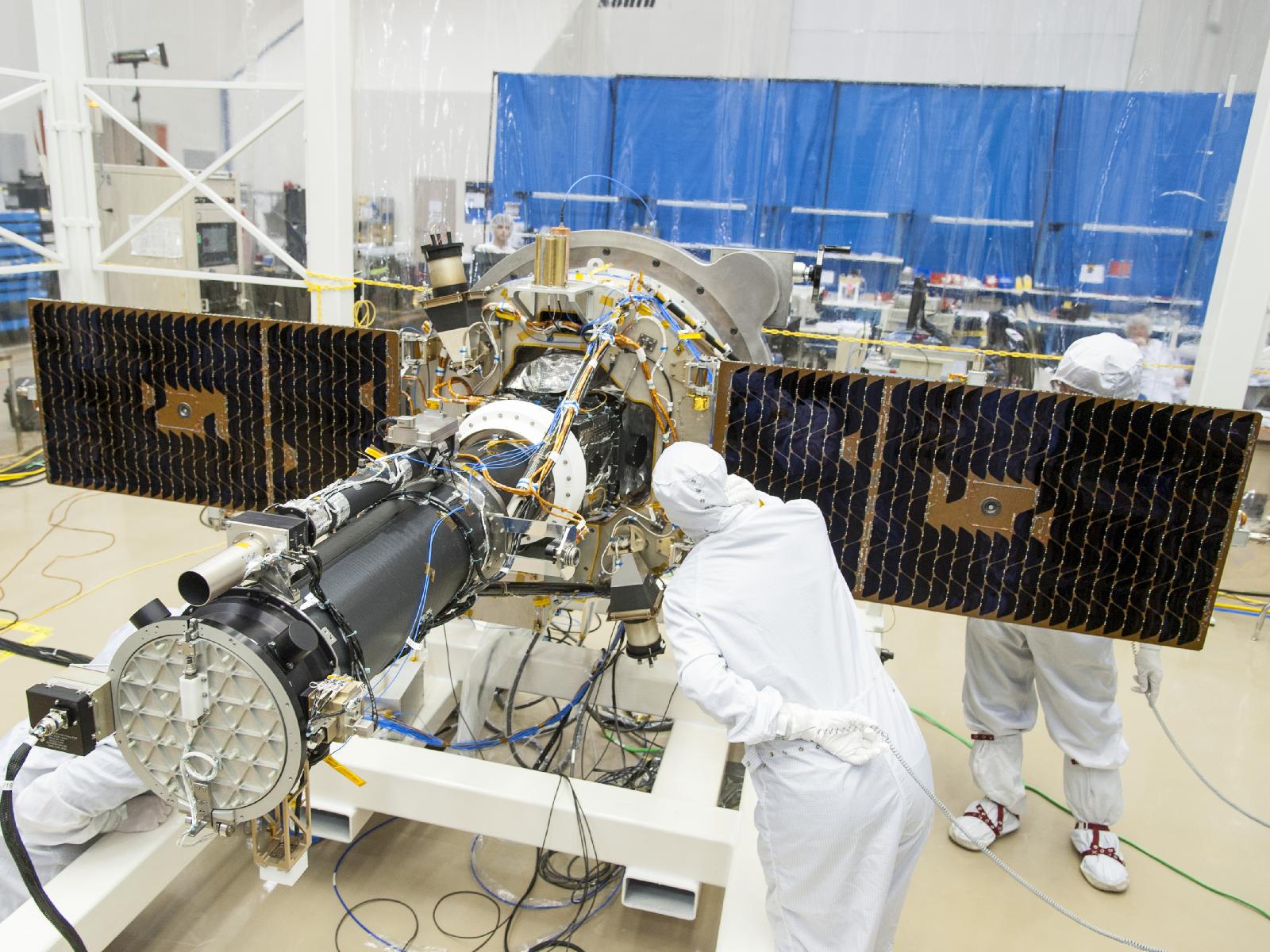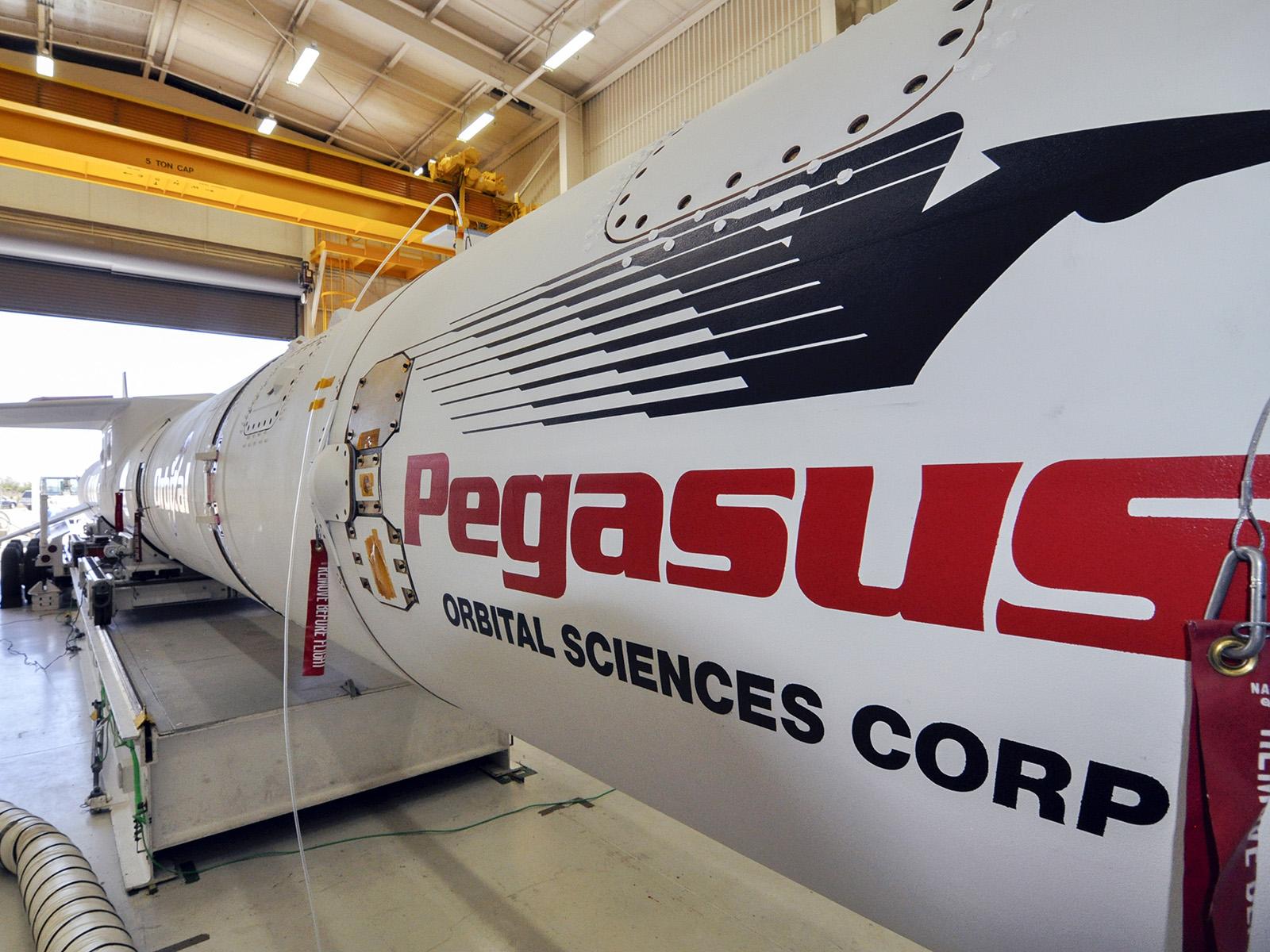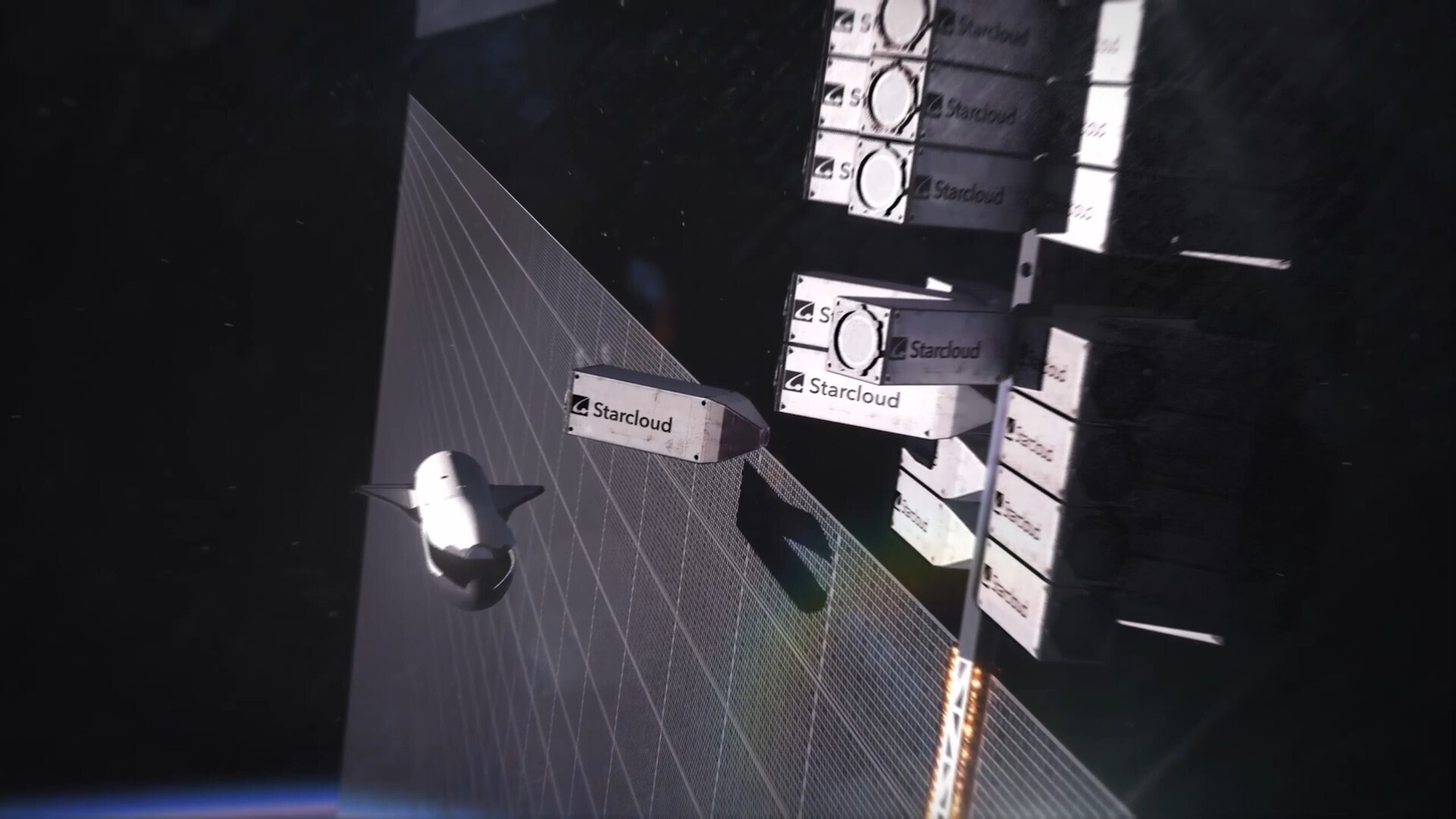Photos: NASA's IRIS Sun Observatory Mission in Space
NASA IRIS Sun Telescope: Mission Control
This still image from a NASA webcast shows a view inside the IRIS sun telescope mission operations center at NASA's Ames Research Center in Moffett Field, Calif. [Read the full launch story]
NASA IRIS Sun Telescope Launch Plane Returns
The Stargazer L-1011 carrier plane returns to its home port at Vandenberg Air Force Base, Calif., after launching NASA's IRIS sun-watching telescope atop an Orbital Sciences Pegasus XL rocket out over the Pacific Ocean on June 27, 2013. [Read the full launch story]
How the Tiny IRIS Ultraviolet Sun Observing Satellite Works (Infographic)
IRIS orbits the Earth and focuses on tiny details on the sun's surface with its small but powerful telescope. [See how it works in this full SPACE.com infographic]
Integrated IRIS Spacecraft in Clean Room
NASA's Interface Region Imaging Spectrograph (IRIS) with solar panels open in flight position, in the clean room at the Lockheed Martin Advanced Technology Center in Palo Alto, where it was designed and built.
Preparing Solar Satellite for Launch
Technicians work on the payload fairing that will protect NASA's Interface Region Imaging Spectrograph (IRIS) spacecraft during launch aboard an Orbital Sciences Pegasus XL rocket. Launch is currently scheduled no earlier than May 28, 2013.
Hinode's View of Interface Region
This image from JAXA’s Hinode mission shows the lower regions of the sun’s atmosphere, the interface region, which a new mission called the Interface Region Imaging Spectrograph, or IRIS, will study in exquisite detail. Where previous missions have been able to image material at only a few predetermined temperatures in this region, IRIS will observe a wide range of temperatures from 5000 Kelvins to 65,000 Kelvins (and up to 10 million Kelvins during solar flares). Its images will resolve structures down to 150 miles across.
IRIS Mission Logo
IRIS mission logo features a sun, a prism with a rainbow light spectrum coming from it, and on the bottom a list of mission partners: NASA, LMSAL, LMS&ES, ARC, SAO, UiO, MSU, LSJU.
Breaking space news, the latest updates on rocket launches, skywatching events and more!
Payload Fairing Installed
Engineers attach the starboard side of the payload fairing into place for NASA's IRIS spacecraft. The fairing connects to the nose of the Orbital Sciences Pegasus XL rocket that will lift the solar observatory into orbit in June. This image was released June 10, 2013.
Verifying the Solar Panel Connections
Engineers inspect the solar panel connections on the NASA's Interface Region Imaging Spectrograph (IRIS) in the clean room at the Lockheed Martin Advanced Technology Center in Palo Alto where it was designed and built.
Pegasus Rocket
The Orbital Sciences Pegasus XL rocket that will lift NASA's IRIS solar observatory into orbit is moved from a hangar onto a transporter at Vandenberg Air Force Base. This image was released June 10, 2013.

Space.com is the premier source of space exploration, innovation and astronomy news, chronicling (and celebrating) humanity's ongoing expansion across the final frontier. Originally founded in 1999, Space.com is, and always has been, the passion of writers and editors who are space fans and also trained journalists. Our current news team consists of Editor-in-Chief Tariq Malik; Editor Hanneke Weitering, Senior Space Writer Mike Wall; Senior Writer Meghan Bartels; Senior Writer Chelsea Gohd, Senior Writer Tereza Pultarova and Staff Writer Alexander Cox, focusing on e-commerce. Senior Producer Steve Spaleta oversees our space videos, with Diana Whitcroft as our Social Media Editor.

